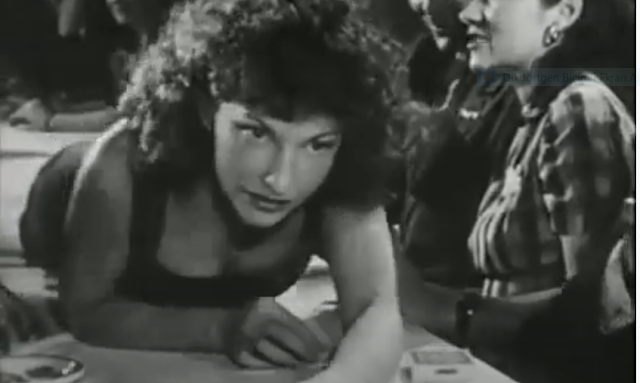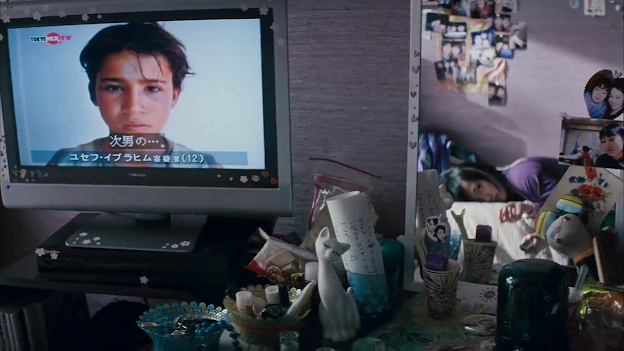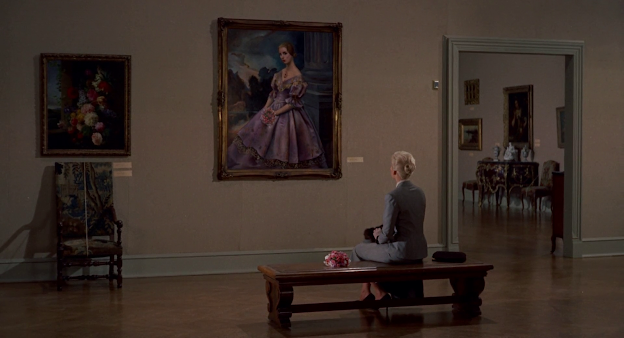Blog 3
What Was in Deren’s Mind?
Maya
Deren was one of the interesting people in the history of cinema and arts. She
was a strong woman who has a lot of revolutionary ideas about arts and cinema.
Her works and ideas are valuable even today. At first glance her movies can
confuse us but after several times watching, you start to enjoy, start to see
her points, and think that how intelligent and foresighted person she was. We
call her movies experimental, but I think they are not just important because
of being experimental but also being unique and the successful of bringing
different perspective to filmmaking.
When I
watched a documentary about her life and works, I started to understand her and
the sense of admire occurred in me. https://www.youtube.com/watch?v=98hchvAS0VY
I want to talk about two of her films Meshes
of Afternoon (1943) https://vimeo.com/254789239
and At Land (1944) https://www.youtube.com/watch?v=KKvlzBY7vOI
and considering with her ideas about
film. She is not just a director she also acts in her movies as the protagonist.
We can say that she is telling the story of herself and by doing this she uses
such techniques which make us feel like it is a universal story of the women or
in general: the humanity: “…it can produce maximum results for virtually
minimal effort: it requires of its operator only a modicum of aptitude and
energy; of its subject matter, only that it exist; and of its audience, only
that they can see. On this elementary level it functions ideally as a mass
medium for communicating equally elementary ideas.”(p. 150)
I think
she is not just interested in shooting a movie instead she is trying to do something
else in her movies like creating the medium’s own unique language and
capabilities of cinema as an art. She sees the film as a creative action: “In
film, the image can and should be only the beginning, the basic material of the
creative action.”(p. 159)
In Meshes of Afternoon The
props like the flower, the knife, the key, and the mirror symbolize a lot of
things in the movie. The people-like figure in black clothes and mirror face is
something that she uses for distorting the human figure and iconically it
refers her identity.( 00:07:55) The movie is going like a flow and felt like a
dream. In this flow, she uses dance movements a lot. (00:0:25)I think the
mirror is the key point in the movie that represents her struggle to catch
herself and understand herself. Where she wants to stand in her life and what
she does not want to be are mixing and creates a beautiful harmony. Her act of shattering
the mirror is opens the door to reaching the waves.
In the At Land we see both differences and similarities with the Meshes of Afternoon. Her usage of slow motion is vital in both her movies in Meshes of Afternoon (00:04:35) and At Land (00:09:30). We see both scenes that she really interested in issues like time and reality: “By manipulation of time and space, I mean also the creation of a relationship between separate times, places, and persons.”(p.165) Slow motion can symbolize her desire to look events closer and expanding the lines of reality. This takes us another common technique of her she uses in both her films: more than one Maya Deren. We see three or four versions of her in both movies Meshes of Afternoon (00:09:21) an At Land (00:13:23). These can represent her different identities in different times during her life. Although both her movies touch the subject of identity Meshes of Afternoon approaches this issue as a crisis, the dream moment in one afternoon, At Land shows this idea in more general perspective.
We see a woman’s journey on her life and how
she must struggle during her whole life. In this case At Land stands closer
to the feminist perspective. She talk about at land: “In my At Land, it
has been the technique by which the dynamic of the Odyssey is reversed and the
protagonist, instead of undertaking the long voyage of search for adventure, finds
instead that the universe itself has usurped the dynamic action which was once
the prerogative of human will, and confronts her with a volatile and relentless
metamorphosis in which her personal identity is the sole constancy.”(p.165)
In At Land we see
excessive usage of editing in a certain way (00:02:40). She says that: “Separate
and distant places not only can be related but can be made continuous by a
continuity of identity and of movement, as when a person begins a gesture in
one setting, this shot being immediately followed by the hand entering another
setting altogether to complete the gesture there.” (p.165)These sentences support
the idea of her different identities in her life are connected in a certain way
and constitutes her personally step by step.
In the beginning of the movie we
see her going out from the sea. (00:00:34) This scene reminds the human birth
and coming into the world. I thought that it could represent her journey from Ukraine
to the dream world America or just because she likes the sea a lot as we see in
the documentary. We also see how she uses the reverse motion on the waves.(00:00:45)
This really creates an effect of distorted reality and looks like the resistance
against the cruelty of time: “Another unique image which the camera can yield
is reverse motion. When used meaningfully, it does not convey so much a sense
of a backward movement spatially, but rather an undoing of time.”(p.158)
As a result,
I think Maya Deren’s movies are not just a movie, but they consist little parts
of life which makes us question and try to solve problems about the mystery of
life. I believe that her movies try to express something bigger than our reality
and I want to finish my essay with her words on this issue: “…the
motion-picture medium, which, structured expressly to deal in movement and
time-space relationships, would be the most propitious and appropriate art form
for expressing, in terms of its own paradoxically intangible reality, the moral
and metaphysical concepts of the citizen of this new age.”(p.166)
Bibliography
Deren,Maya. Cinematography: The Creative Use of Reality .Daedalus , Winter, 1960, Vol. 89, No. 1, The Visual Arts Today (Winter, 1960), p. 150-167






Yorumlar
Yorum Gönder